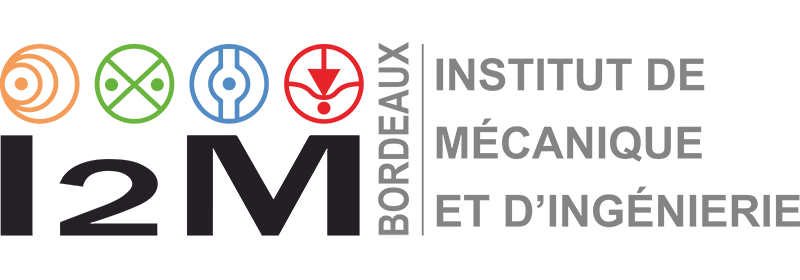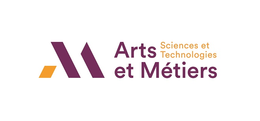Experimental and theoretical study of high heating-rate drying in porous media: application to biomass pyrolysis
Publication date du 22/02/2023

General information
Project: ANR PYROMECA
Host laboratory: Institut de Mécanique et d’Ingénierie de Bordeaux (I2M) – porous media team.
Type of contract: 3 years PhD, full-time position. Gross salary: 2044-2300 € €/month.
Starting date:as soon as possible.
Topic description
The pyrolysis of biomass is today a subject of high interest for various applications ranging from the production of biofuel, green chemicals, bio-based carbon fibers to the prediction of the spread of large-scale forest fires.
Drying, which is the first step in biomass pyrolysis, plays a key role in the whole process. The description of this stage requires capturing the phenomena of moisture transport and heat transfer inside the material. Humidity is present in three forms: free water (liquid filling the pores), bound water (liquid inside the cellulosic fibers) and steam mixed with dry air (humid gas filling the pores). During pyrolysis the material is exposed to high temperatures resulting in high internal vaporization rates and significant internal pressure inside the medium. The pressure gradient allows for the enhanced displacement and expulsion of water in liquid form. Liquid water is commonly modeled as a solid and its vaporization follows an Arrhenius law in most existing models [Omidy et al., 2016]. More advanced models exist [Perré et al., 1999; Lux et al., 2012], which are based on a generalized Darcy model for the transport of liquid water and saturation laws for its vaporization. These biomass drying models assume quasi-static conditions of gentle drying. Under these conditions, the hypothesis of thermodynamic equilibrium at the liquid/gas interface is assumed to be valid, leading to a single total moisture transport equation (liquid and vapour) at the Darcy scale. However, for drying situations at a high heating rate (which is the case of pyrolysis), this hypothesis becomes unrealistic as flow and reaction rates generate significant local scale variations over the averaging volume (Golfier et al., 2009).
For these reasons, the study of high heating rate drying at the pore-scale is essential in order to model the pyrolysis of biomass and properly describe the transition between the continuous film (Laplace pressure and disjunction pressure) where the migration of water is governed by the dynamics of the thin layers and the droplets where the migration takes place by mechanism of evaporation/condensation. The behavior becomes even more complex in the presence of a thermal gradient that impacts the dynamics of the flow of the liquid film under the effect of the induced surface tension gradient (Marangoni effect).
Objective of the PhD thesis and Role of the PhD candidate
This PhD thesis is part of the ANR PYROMECA project that aims at developing a generic thermomechanical model for porous materials submitted to pyrolysis. In this context, the doctoral student will join the Porous Media team at I2M laboratory. The specific objective of the PhD thesis is to investigate the influence of heating rate on the dynamics of drying and reliably describe the transport of humidity in biomass.
To achieve this goal, a macroscopic model will be developed considering the volume-averaged effects of the key microscopic mechanisms: the relative importance of capillary and viscous forces during multiphase flow, the physics of mass and heat transfer within the pores, the interface phenomena, etc.
These microscopic mechanisms will first be elucidated by conducting a series of pore-scale experiments. Inert microfluidic devices will be used allowing for the in-situ visualization and characterization of microscopic flows and heat transfer under well-controlled boundary conditions.
Based on the results of the microfluidic experiments, a non-equilibrium thermodynamic model will be eveloped to identify the limits of validity of the equilibrium approach in regard to the heating rate. Once the microscopic phenomena are well understood and well described, the proposed pore-scale model will be translated to the macroscopic scale by volume averaging and integrated into the generic thermomechanical model of pyrolysis.
For validation, a high heating-rate experimental facility will be developed. One-dimensional model materials representative of lignocellulosic fibers and real samples of Pinus Pinaster will be tested. The experimental measurements provided by this setup will be used to validate the new high heating-rate drying models.
Required background of the candidate
- Scientific university degree (Master) in Earth/Environmental Sciences, Physics, Chemical En-gineering, Petroleum engineering or a related discipline.
- A solid theoretical and experimental understanding of the fundamentals of fluid mechanics and heat transfer is required.
- Keen interest in experimentation and modelling.
- The principles of mathematical programming and numerical methods must be known. Perform-ing experiments requires dexterity, autonomy and meticulousness.
References
- F. Golfier, B. D. Wood, L. Orgogozo, M. Quintard, M. Buès, Biofilms in porous media: Development of macroscopic transport equations via volume averaging with closure for local mass equilibrium conditions, Advances in Water Resources, Volume 32, Issue 3, 463-485, 2009.
- J. Lux, Y. Anguy. A study of the behavior of IMplicit Pressure Explicit Saturation (IMPES) schedules for two-phase flow in dynamic pore-network models. Transport in Porous Media 93:203–221, 2012.
- A. Omidy, F. Panerai, J. Lachaud, N. N. Mansour, A. Martin. Effects of water phase change on the material response of low-density carbon-phenolic ablators. Journal of Thermophysics and Heat Transfer, Technical Note. 30:473-478, 2016.
- P. Perré P, W. Turner. A 3-D version of TransPore: a comprehensive heat and mass transfer computational model for simulating the drying of porous media. Int J Heat Mass Transf. 42:4501–21, 1999.
Contact
Please send CV, cover letter and letter(s) of recommendation with the reference “PhD in high heating rate drying in porous media” to:
- antonio.rodriguezdecastro@ensam.eu
- marc.valat@u-bordeaux.fr
- amine.ben-abdelwahed@ensam.eu
- jean.lachaud@u-bordeaux.fr






